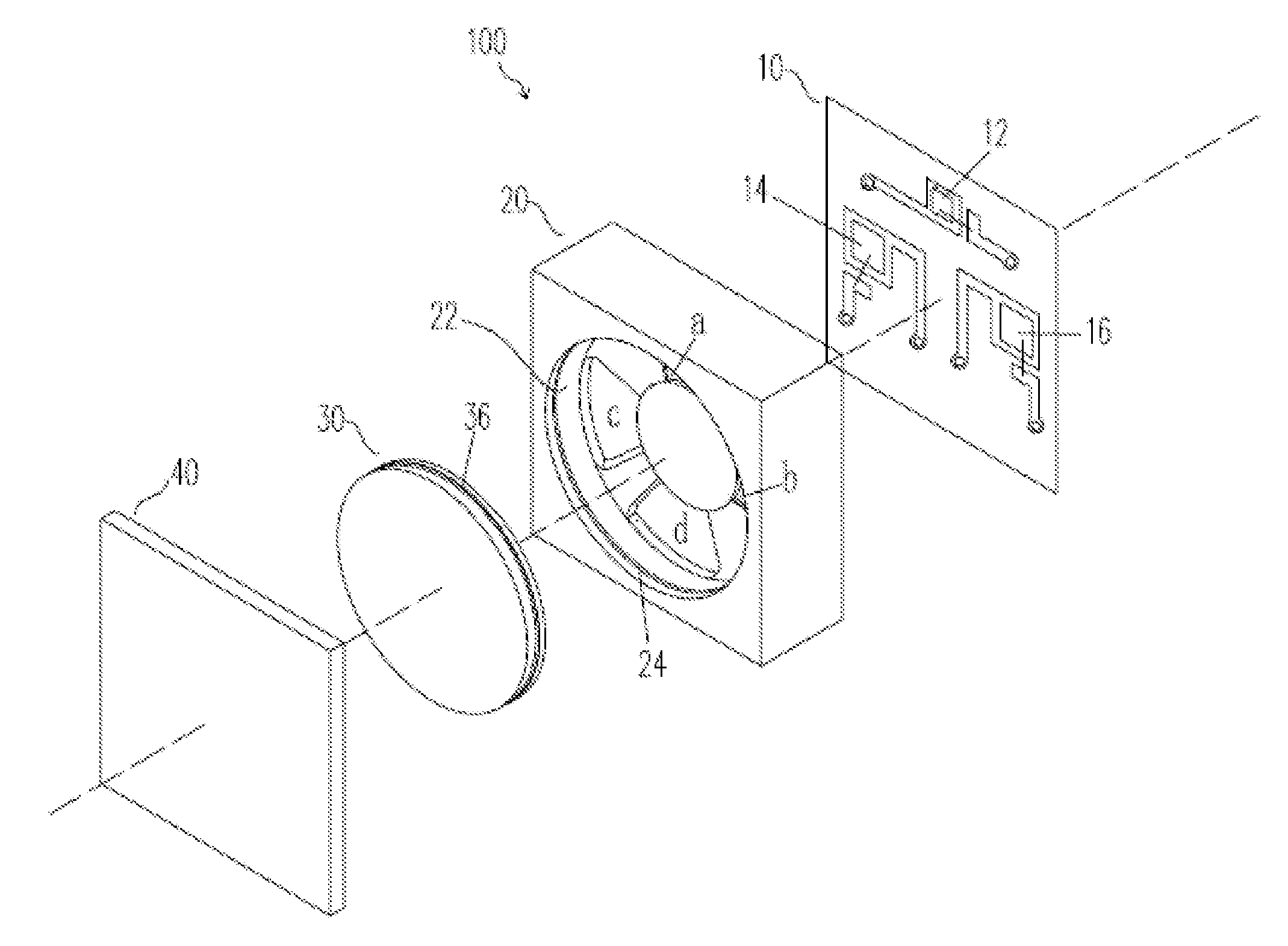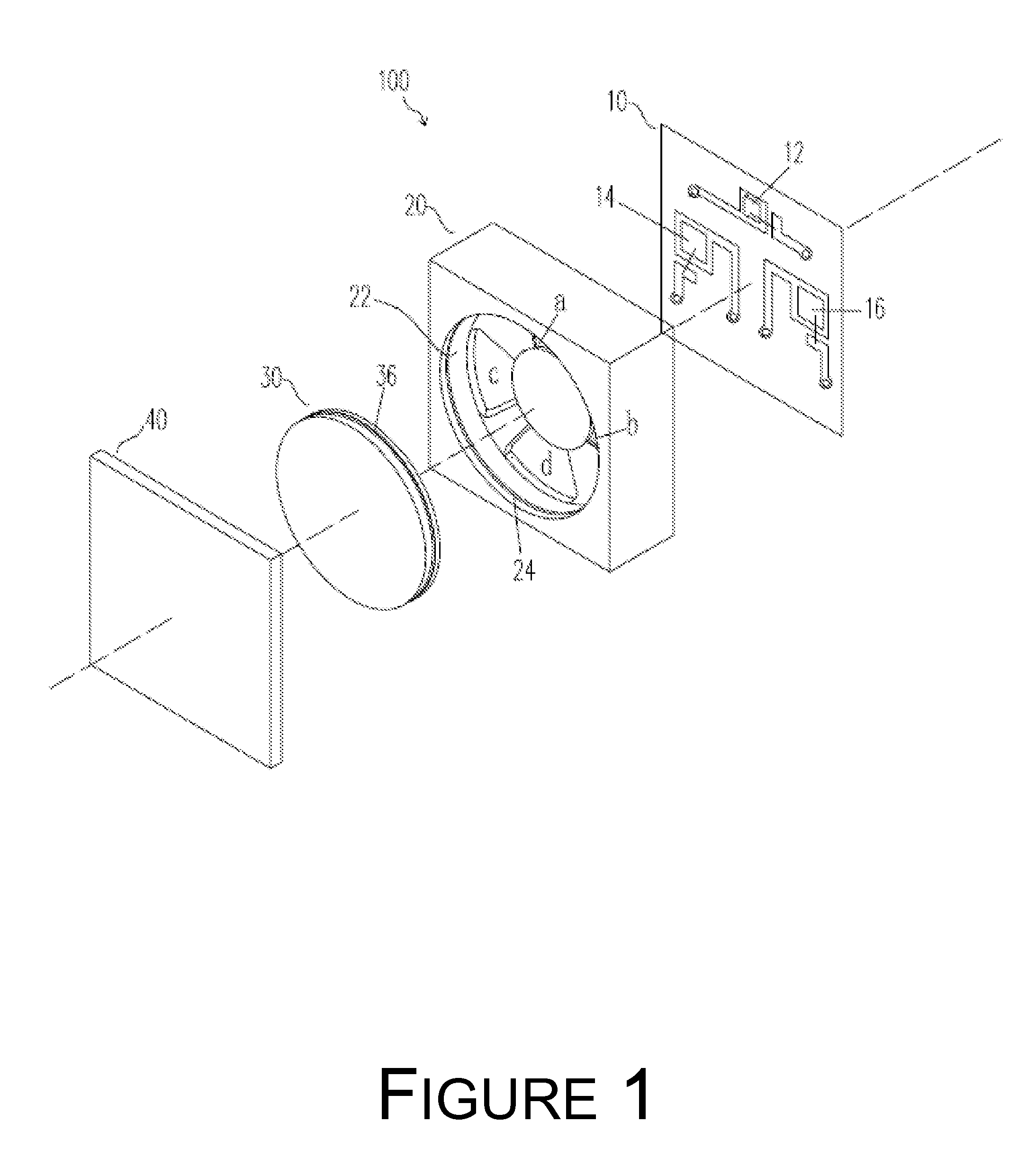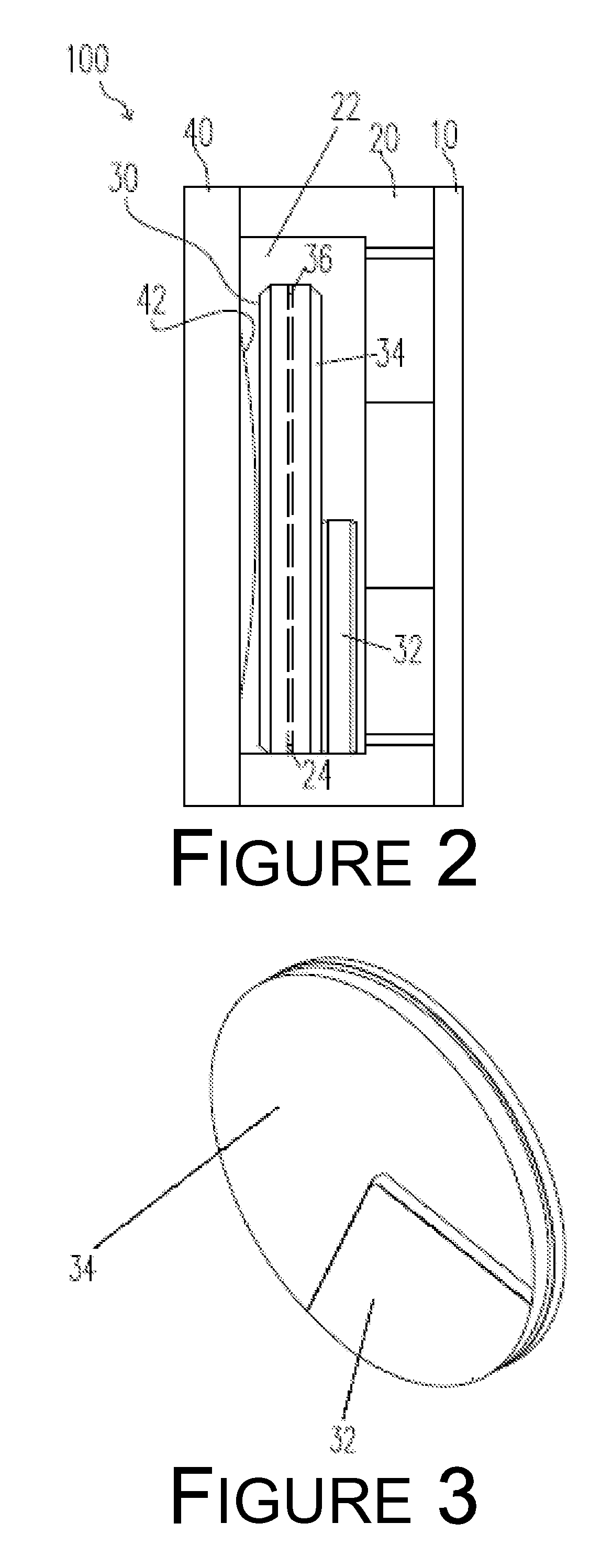Tilt Sensor
a technology of tilt sensor and tilt sensor, which is applied in the field of tilt sensor, can solve the problems of reduced sensitivity, malfunction of sensing, or both, and achieve the effect of larger and heavier, higher sensitivity
- Summary
- Abstract
- Description
- Claims
- Application Information
AI Technical Summary
Benefits of technology
Problems solved by technology
Method used
Image
Examples
Embodiment Construction
[0035]Referring to FIGS. 1 and 2, FIG. 1 illustrates a three-dimensional exploded view of a tilt sensor 100 in accordance with an embodiment of the present invention. FIG. 2 illustrates a cross-sectional view of the tilt sensor 100 in accordance with an embodiment of the present invention. The tilt sensor 100 comprises a backplane 10, a base 20, a moving component 30, and a cover 40. A light emitting component 12, a first light sensing component 14, and a second light sensing component 16 are disposed on the backplane 10. In one embodiment, the backplane 10 is a printed circuit board (PCB) or another type of circuit board. In one embodiment, the light emitting component 12 comprises an infrared light emitting diode, and each of the first and second light sensing components 14, 16 comprises a phototransistor. However, as those skilled in the art would appreciate, in other embodiments one or more of these components may be substitute with respective one or more components having simil...
PUM
 Login to View More
Login to View More Abstract
Description
Claims
Application Information
 Login to View More
Login to View More - R&D
- Intellectual Property
- Life Sciences
- Materials
- Tech Scout
- Unparalleled Data Quality
- Higher Quality Content
- 60% Fewer Hallucinations
Browse by: Latest US Patents, China's latest patents, Technical Efficacy Thesaurus, Application Domain, Technology Topic, Popular Technical Reports.
© 2025 PatSnap. All rights reserved.Legal|Privacy policy|Modern Slavery Act Transparency Statement|Sitemap|About US| Contact US: help@patsnap.com



